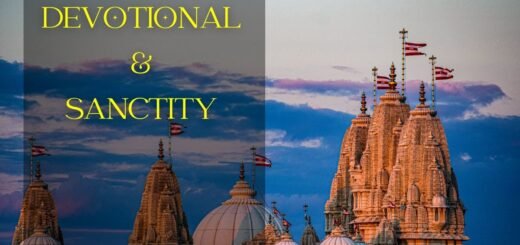Vaishno Devi Temple History And Significance
Know the details about Vaishno Devi Temple History And Significance, Vaishno Devi Temple history and importance, Vaishno Devi Temple location route map guide
It is generally agreed upon that the Vaishno Devi Temple is the most significant temple dedicated to the goddess Shakti, who is also referred to as Sati or Adi Parashakti. The shrine has a tranquil and isolated atmosphere because of its location in the Trikuta Mountains in Jammu & Kashmir. See below to get the details about Vaishno Devi Temple History And Significance
Click here to get Maa Durga Stuti Lyrics
Click here to get Haridwar Vaishno Devi Temple Opening Closing Timings Today
Vaishno Devi Temple History And Significance
What is the history of the Vaishno Devi Temple?
There is no way to pinpoint the exact day or year when people first began to worship the Goddess in the caves where she was discovered; this information is not available. On the other hand, the Mahabharata has a number of passages that offer suggestions about the holy goddess who dwells in the Jamboo Mountains. These passages may be found throughout the text.
The area that is today known as Jammu was once referred to by its earlier name, Jamboo. Some people think that the Pandavas were the first humans to worship the Goddess in the holy cave where she resides. Others disagree with this view. It is believed that the five stone statues that were unearthed in a nearby mountain range represent the Pandavas.
The sculptures were found in one of the mountain ranges. This provides some support for the hypothesis that the Pandavas had some kind of connection with the Vaishno Devi Temple.
Click here to get the Vaishno Devi temple location route map guide
Vaishno Devi Temple History And Significance
What is the importance of the Vaishno Devi Temple?
The Shrine of Mata Vaishno Devi, also known as Mata Vaishno Devi, is considered by many people to be the most significant Shakti Peetha associated with the Goddess Sati. After the Daksha Yagna event, this location is said to be where the skull or head of the Goddess landed. On the other hand, another myth states that this spot was where the right arm of the goddess Sati crashed to the ground.
The fact that the sacred cave still contains the skeletal bones of a human hand is evidence that lends credence to this concept. In common parlance, it is known as “Varad Hast,” which literally translates to “The Hand that grants blessings.”
In addition, the majority of people who go to the Vaishno Devi temple have a firm conviction that they have an inner spiritual call or pull from the Goddess or Mata, urging them to go there. This is a common occurrence, according to this belief. According to this belief, the benefits of the goddess may only be received by the one who answers her call. Once the devotee hears the call, there is nothing that can stop them from making their way to the Vaishno Devi Temple.
Vaishno Devi Temple History And Significance
The three sacred Pindies that can be seen here originate from a single rock at the foot of the structure. They are manifestations of the goddess Shakti. On the other hand, the color of the rock and its consistency are two elements that set them apart from one another. Black, which stands for an unknowable force, is the color of the Pindi worn by the goddess Mahakali.
The golden yellow hue that can be seen on Goddess Mahalakshmi’s Pindi is meant to symbolize riches, prosperity, and a high quality of life. The bindi of the goddess Saraswati has a white hue to it, which is symbolic of her purity and the knowledge that she brings to life.
The Vaishno Devi Temple is the most popular pilgrimage destination in the northern portion of India, and it is tied for second place with the Tirumala Sri Venkateshwara Temple in Tirupati, Andhra Pradesh, for the title of the most popular shrine in that temple.

